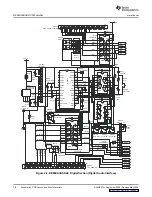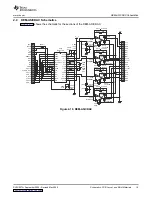
Preface
SLEU057A – September 2004 – Revised May 2009
Read This First
About This Manual
This document provides the information needed to set up and operate the
DEM-DSD1796/PCM1795/PCM1796/PCM1798 EVM evaluation module, a test platform for the 24-bit,
192-kHz, sampling stereo
,
, and
audio digital-to-analog
converters (DACs). For a more detailed description of these devices, refer to the specific device product
data sheet available from the Texas Instruments web site at
How to Use This Manual
Throughout this document, the abbreviation
EVM
and the term
evaluation module
are synonymous with
the DEM-DSD1796/PCM1795/PCM1796/PCM1798 EVM. Unless specifically noted, the information
presented in this manual applies to the DSD1796, PCM1795, PCM1796, and PCM1798 audio stereo
DACs.
describes the hardware setup guide for the EVM, including the necessary information required
to configure the EVM switches and jumpers for product evaluation. This chapter also explains how to use
the software provided with the DEM-DSD1796/PCM1795/PCM1796/PCM1798 EVM for controlling the
DAC.
includes the EVM electrical schematics, printed circuit board (PCB) layouts, and the bills of
material for both the DEM-DSD1796/PCM1795/PCM1796/PCM1798, the DEM-AS/CDAC, and the
DEM-DAI/ASDAC.
Information About Cautions and Warnings
This document contains caution statements.
CAUTION
This is an example of a caution statement. A caution statement describes a
situation that could potentially damage your software or equipment.
The information in a caution or a warning is provided for your protection. Please read each caution and
warning carefully.
If You Need Assistance
If you have questions regarding either the use of this evaluation module or the information contained in the
accompanying documentation, please contact the Texas Instruments Product Information Center at (972)
644–5580 or visit the TI web site at
.
FCC Warning
This equipment is intended for use in a laboratory test environment only. It generates, uses, and can
radiate radio frequency energy and has not been tested for compliance with the limits of computing
devices pursuant to subpart J of part 15 of FCC rules, which are designed to provide reasonable
protection against radio frequency interference. Operation of this equipment in other environments may
cause interference with radio communications, in which case the user at his own expense is required to
take whatever measures may be required to correct this interference.
Microsoft, Windows are registered trademarks of Microsoft Corporation.
I
2
S is a trademark of NXP Semiconductors.
TOSLINK is a trademark of Toshiba Corporation.
All other trademarks are the property of their respective owners.
SLEU057A – September 2004 – Revised May 2009
Read This First
5






































